
Edward Grey, 1st Viscount Lisle (died 1492) was an English nobleman who was created Viscount Lisle in 1483, [1] in recognition of his wife's descent.

Edward Grey, 1st Viscount Lisle (died 1492) was an English nobleman who was created Viscount Lisle in 1483, [1] in recognition of his wife's descent.
Sir Edward Grey was a younger son of Sir Edward Grey (c. 1415–1457) (a son by his second marriage of Reginald Grey, 3rd Baron Grey de Ruthyn) by his wife Elizabeth Ferrers, 6th Baroness Ferrers of Groby (1419–1483) [2] [3] [4] His father was summoned to parliament as Baron Ferrers of Groby in right of his wife. [5] His eldest brother was Sir John Grey of Groby (c. 1432-1461), a Lancastrian knight, the first husband of Elizabeth Woodville who later married King Edward IV, and great-great-grandfather of Lady Jane Grey.
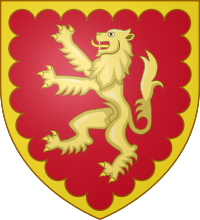
Sir Edward Grey married Elizabeth Talbot, 3rd Baroness Lisle, daughter and eventual heiress of John Talbot, 1st Viscount Lisle and 1st Baron Lisle (1423–1453), 4th son of John Talbot, 1st Earl of Shrewsbury by his wife Margaret Beauchamp, heiress to the Barony of Lisle created by writ for her great-great-grandfather Gerard de Lisle (d.1360). [7] By Elizabeth Talbot he had the following children: [8]
There might have been another daughter- Margaret, Countess of Wiltshire, wife of Edward Stafford, 2nd Earl of Wiltshire (who died in 1499), they had no issue. However occasionally in Tudor times name Margaret was used as synonymous with Muriel. Hence Muriel and Margaret might be the same person.
Thomas Grey, 1st Marquess of Dorset, 1st Earl of Huntingdon, 7th Baron Ferrers of Groby, was an English nobleman, courtier and the eldest son of Elizabeth Woodville and her first husband Sir John Grey of Groby. Her second marriage to King Edward IV made her Queen of England, thus elevating Grey's status at court and in the realm as the stepson of the King. Through his mother's assiduous endeavours, he made two materially advantageous marriages to wealthy heiresses, the King's niece Anne Holland and the King’s cousin, Cecily Bonville, 7th Baroness Harington. By the latter, he had 14 children.
Baron Lisle was a title which was created five times in the Peerage of England during the Middle Ages and Tudor period, and once in the Peerage of Ireland in the 18th century.
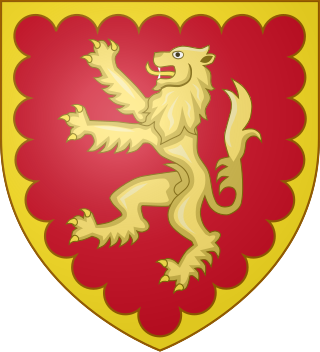
The title of Viscount Lisle has been created six times in the Peerage of England. The first creation, on 30 October 1451, was for John Talbot, 1st Baron Lisle. Upon the death of his son Thomas at the Battle of Nibley Green in 1470, the viscountcy became extinct and the barony abeyant.
Arthur Plantagenet, 1st Viscount Lisle, KG was an illegitimate son of the English king Edward IV, half-brother-in-law of Henry VII, and an uncle of Henry VIII, at whose court he was a prominent figure and by whom he was appointed Lord Deputy of Calais (1533–40). The survival of a large collection of his correspondence in the Lisle Letters makes his life one of the best documented of his era.
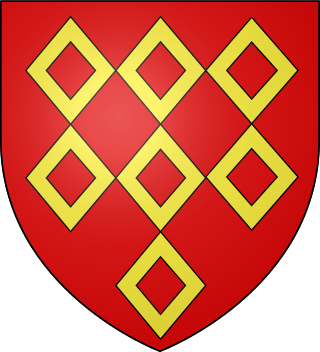
Baron Ferrers of Groby was a title in the Peerage of England. It was created by writ on 29 December 1299 when William Ferrers, 1st Baron Ferrers of Groby was summoned to parliament. He was the son of Sir William de Ferrers, Knt., of Groby, Leicestershire, (d.1287) by his first wife Anne Durward, 2nd daughter of Alan Durward and his wife Margery of Scotland, and grandson of William de Ferrers, 5th Earl of Derby. The first Baron was married to Ellen de Menteith, daughter of Alexander, Earl of Menteith. In 1475 the eighth baron was created the Marquess of Dorset, and the barony in effect merged with the marquessate. It was forfeited along with the marquessate when the third marquess was attainted in 1554.
John Talbot, 1st Baron Lisle and 1st Viscount Lisle, English nobleman and medieval soldier, was the son of John Talbot, 1st Earl of Shrewsbury, and his second wife Margaret Beauchamp.
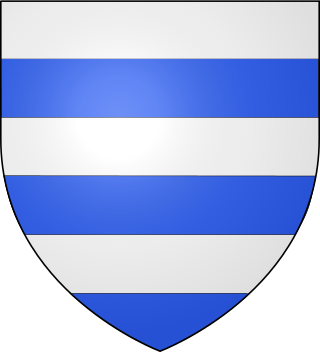
Sir John Grey, of Groby, Leicestershire was a Lancastrian knight, the first husband of Elizabeth Woodville who later married King Edward IV of England, and great-great-grandfather of Lady Jane Grey.
Bourchier is an English surname, from French Boursier, keeper of the purse. Bourchier is the Norman pronunciation.

Thomas Grey, 2nd Marquess of Dorset was an English peer, courtier, soldier and landowner of the House of Grey.

Sir John Basset, of Tehidy in Cornwall and of Umberleigh in Devon was Sheriff of Cornwall in 1497, 1517 and 1522 and Sheriff of Devon in 1524. Although himself an important figure in the West Country gentry, he is chiefly remembered for his connection with the life of his second wife and widow Honor Grenville, who moved into the highest society when she remarried to Arthur Plantagenet, 1st Viscount Lisle KG, an illegitimate son of King Edward IV, and an important figure at the court of King Henry VIII, his nephew.
Anne Woodville, Viscountess Bourchier was an English noblewoman. She was a younger sister of Queen Consort Elizabeth Woodville to whom she served as a lady-in-waiting. Anne was married twice; first to William Bourchier, Viscount Bourchier, and secondly to George Grey, 2nd Earl of Kent. Anne was the grandmother of the disinherited adulteress Anne Bourchier, 7th Baroness Bourchier, and an ancestress of Robert Devereux, 2nd Earl of Essex.
The Lisle Papers are the correspondence received in Calais between 1533 and 1540 by Arthur Plantagenet, 1st Viscount Lisle (c.1480-1542), Lord Deputy of Calais, an illegitimate son of King Edward IV and an uncle of King Henry VIII, and by his wife, Honor Plantagenet, Viscountess Lisle, from several servants, courtiers, royal officials, friends, children and other relatives. They are an important source of information on domestic life in the Tudor age and of life at the court of Henry VIII.
Elizabeth Grey, 5th Baroness Lisle, 3rd Viscountess Lisle was an English noblewoman and heiress.
Elizabeth Grey, 6th Baroness Lisle was an English noblewoman during the reigns of Henry VII and VIII.

Sir John Chichester (1519/20-1569) of Raleigh in the parish of Pilton, near Barnstaple in North Devon, was a leading member of the Devonshire gentry, a naval captain, and ardent Protestant who served as Sheriff of Devon in 1550-1551, and as Knight of the Shire for Devon in 1547, April 1554, and 1563, and as Member of Parliament for Barnstaple in 1559, over which borough his lordship of the manor of Raleigh, Pilton had considerable influence.

Sir Thomas Grenville II, K.B.,, lord of the manors of Stowe in Kilkhampton, Cornwall and Bideford, Devon, Sheriff of Cornwall in 1481 and 1486. During the Wars of the Roses, he was a Lancastrian supporter who had taken part in the conspiracy against Richard III, organised by the Duke of Buckingham. On the accession of King Henry VII (1485–1509) to the throne, Sir Thomas was appointed one of the Esquires of the Body to Henry VII. On 14 November 1501 upon the marriage of Prince Arthur to Katherine of Aragon, he was created a Knight of the Bath. He served on the Commission of the Peace for Devon from 1510 to his death in circa 1513.
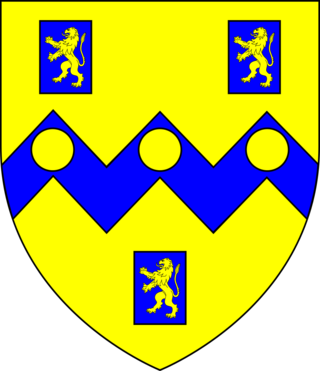
John Rolle (1522–1570) of Stevenstone, in the parish of St Giles in the Wood, near Great Torrington, Devon, was the eldest son and heir of George Rolle, MP, founder of the great Rolle family of Stevenstone, by his second wife Eleanor Dacres. Three monuments survive in memory of his immediate family in the churches of St Giles in the Wood and Chittlehampton.

John Basset (1518–1541) was a young English gentleman from Devon, a member of the old Basset family, and heir to a substantial inheritance. His short life is well documented in the Lisle Papers. He studied law at Lincoln's Inn and at the age of 20, at the start of a promising career, entered the household of Thomas Cromwell, Lord Privy Seal, but died suddenly aged only 23, albeit having married and produced a son and heir, born posthumously. His stepfather and father-in-law was Arthur Plantagenet, 1st Viscount Lisle (d.1542), Lord Deputy of Calais 1533–1540, a bastard son of King Edward IV and thus uncle of King Henry VIII, whose arrest with that of his mother in 1540 at Calais for heresy and treason, was a major, potentially catastrophic, event in his life. He died a year after the arrests, from an unknown illness, but his siblings all went on to have successful careers, especially his younger brother James, mostly as royal courtiers, apparently unaffected by the crisis.

The House of Grey is an ancient English noble family from Creully in Normandy. The founder of the House of Grey was Anchetil de Greye, a Norman chevalier and vassal of William FitzOsbern, 1st Earl of Hereford, one of the few proven companions of William the Conqueror known to have fought at the Battle of Hastings in 1066.

John Grey, 2nd Viscount Lisle was a British peer of the Tudor period. Upon his death the title Viscount Lisle became extinct, but the Barony of Lisle passed to his unborn daughter Elizabeth, his only child.